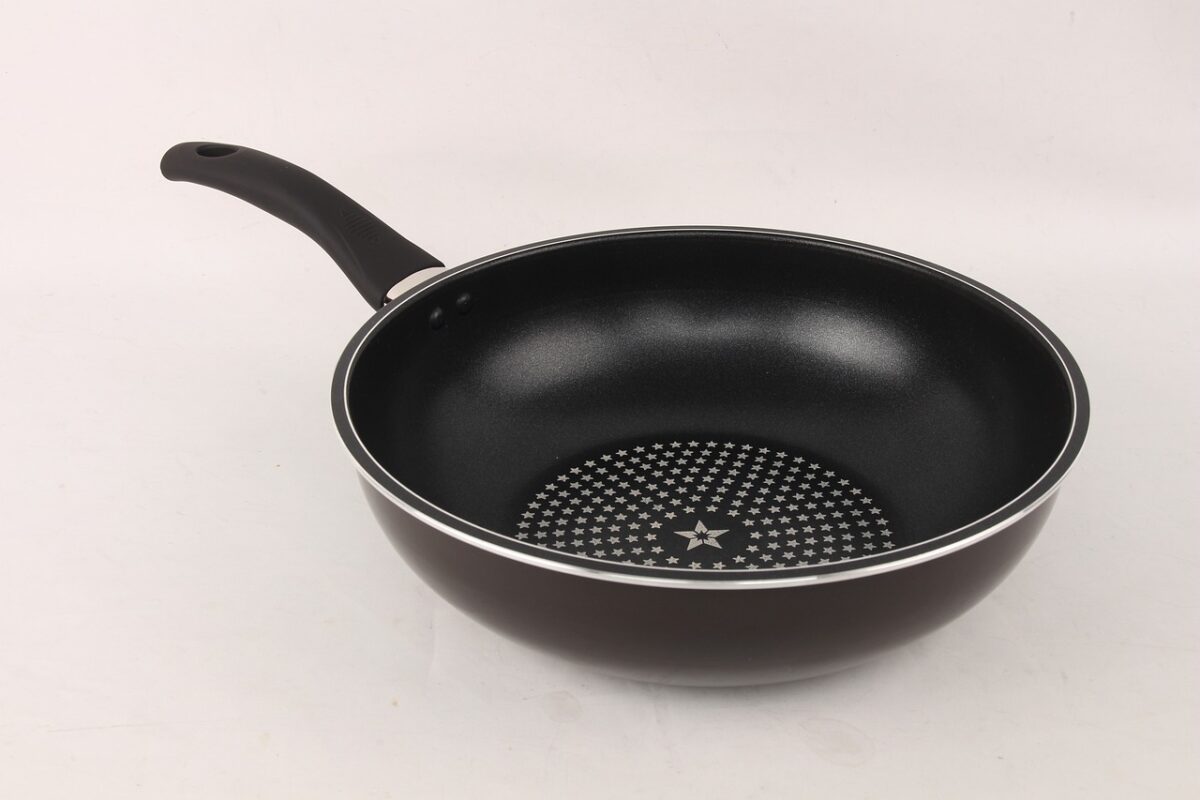
October 10, 2024
How to Clean Pots and Pans Like a Pro
Every craftsman knows that you’re only as good as your tools. The same goes when you’re in the kitchen. If your equipment is of low quality or isn’t properly maintained, you probably won’t be happy with your finished meals. Before your next big feast, make sure to clean your pots and pans thoroughly.
No matter what type of cookware you prefer, it’s important to clean and treat it properly. If you’re dealing with burn marks or stuck-on food, don’t stress. We have all the tips you need to get your pots and pans sparkling like new again.
How Burn Marks Develop
Burn marks can show up on pans if you accidentally leave a meal on the stovetop for too long. Similarly, if you use too much heat to cook your food, burn marks can result. In either case, the outside surface of the food will cook before the inside, so the outside of the food will burn (and burn the pan) while the inside is still cooking. When you cook too much liquid out of your pan, burns are almost guaranteed.
Pans with non-stick coatings are not exempt from burn marks. High temperatures can break down the coating and leave your pan discolored. If you use metal utensils, they can scratch the coating off and make the problem worse. But luckily, there are several methods for cleaning your pots and pans properly, ensuring delicious meals and long-lasting cookware.
Cleaning with Baking Soda
You would be hard-pressed to look in any kitchen in New York City and not find baking soda. This common product is ideal for burnt pots and pans. You can make a paste with water and baking soda to help remove burned-on food and burn marks. For more stubborn stains, use more baking soda than water. The baking soda acts as a gentle abrasive to lift residue from the pan, and the natural odor-fighting qualities help keep your kitchen smelling pleasant.
For best results, smear the paste on the affected area and let it sit for about 30 minutes. Loosen the stains with a scouring pad, working in small sections. Rinse and see the difference! Your cookware will be shinier and more effective, making cooking easier and cleaning less stressful.
Boiling Pots and Pans
Boiling is another quick and easy method for treating burnt cookware, particularly if you’re battling burnt-on food. To fight stubborn residue, add one cup of water and two tablespoons of baking soda to your pan. Boil the water until it is almost all evaporated, then keep it at a simmer for about 15 minutes.
When the water evaporates, a thin white film will still cover the pan. This is simply the remaining baking soda. Then, just scrub away the remaining baking soda and the food debris that comes with it. (Be careful, because your pan will still be hot!) Finish by washing your cookware with soap and water as normal.
Aluminum Foil and Bar Keepers Friend
One of the most trusted products for cleaning pots and pans is Bar Keepers Friend. Pair it with some aluminum foil, and you’ve got a quick and effective cleaning method. Take a sheet of aluminum foil and dampen it. Sprinkle Bar Keepers Friend on your wet pan and gently scrub the pan with your aluminum foil.
Note that this method can scrape away paint or special coating on pans if you aren’t careful, so be selective about which pots and pans you clean with this method. Use light pressure and small circular motions to remove grime and burn marks. Rinse the pan thoroughly when you’re done to reveal the clean and shiny surface underneath.
Cleaning Cast Iron Pans
Whether you’re cooking in one of New York’s top restaurants or in your own apartment kitchen, a cast iron pan can be an incredible tool. Cleaning cast iron pans requires special care to maintain their seasoning and prevent rust. Cast iron pans should not go in dishwashers and should always be hand-washed. Additionally, avoid temperature shock by only using water that is the same temperature as the pan (hot pan = hot water, and cold pan = cold water).
After cooking, let the pan cool slightly, pour out any remaining grease or oil, then rinse it with hot water. Use a non-metal brush or a sponge to gently scrub away food particles. Avoid too much soap, as it can strip the seasoning. For stubborn residue, you can use coarse salt as an abrasive. Once clean, dry the pan thoroughly and coat it with a thin layer of cooking oil to protect it until the next use.
Cleaning Copper Pans
Copper pans[RB2] are another popular cookware choice for professionals and home chefs alike, largely for their antimicrobial properties. If your copper pans are lined with tin (like most are), use a drop of dish soap and warm water to clean them. Remove stuck-on food by soaking the pan in hot water for 15 minutes and gently scrubbing with a sponge. Avoid using harsh cleaners that can scratch at the pan’s surface.
To remove tarnish from your copper pans, create a paste using equal parts vinegar and salt, or use lemon juice and baking soda. Apply the paste to the copper surface and gently scrub with a soft cloth or sponge. Rinse thoroughly with warm water and dry immediately to prevent water spots. For regular maintenance, simply wipe with a damp cloth after cooking.
Cleaning Nonstick Pans
As we touched on earlier, you should be gentle with your nonstick pans to preserve their coating. Wait until your nonstick pan is completely cool before cleaning, then wash with soap and water. Use regular dish soap and a soft sponge or cloth for these pans, avoiding steel wool or harsh cleaners.
For stubborn residues, soak the pan in soapy water for a while before scrubbing gently. Rinse thoroughly and dry with a soft towel. Regular maintenance helps extend the lifespan of nonstick pans and keeps them in top condition. However, when you see the nonstick coating start to peel away from the surface of the pan, it’s time for a new one.
Cleaning Burnt Pans
Cleaning burnt pans can be tricky but manageable with a few simple techniques. Combine equal parts white vinegar and water until your pan is half-full. Add two tablespoons of baking soda and bring the water to a boil, which will help loosen any residue or food on the bottom of the pan.
When the water is boiling, remove the pan from the heat and let rest for 15 minutes. Pour out the water and scrub the residue away. You can also follow the same method without vinegar, simply adding water and a half-cup of baking soda. When you’re done, simply rinse and dry.
Let WGC Help
Taking care of your cookware is just one aspect of keeping a clean kitchen. But after you’re done with your pots and pans, you’ll be left thinking about the counters, the appliances, the floors… it can get overwhelming fast. White Glove Cleaner is here to help!
White Glove Cleaner is a residential and commercial cleaning service that works with customers across all five New York City boroughs. We provide both recurring cleaning services and one-time appointments for special jobs. Keep your home in tip-top shape by scheduling a cleaning every week, every other week, or every month, or bring in our team for one-time jobs like spring cleaning or move-in/move-out cleaning.
Our team is made of passionate individuals who work hard every day to keep our customers happy. Every member of our team is background checked and vetted, so you know you’re working with professionals. We will bring our own cleaners and equipment, so you don’t have to spend extra money. However, if you have preferred cleaning products in your home, we will be happy to use the products of your choice.
Our standard cleaning services tackle not only the kitchen but all the other major rooms in your home. We will sweep and mop floors, wipe down countertops and other flat surfaces, clean the fronts of appliances, take out the trash, and more. If you are in need of additional services, we provide add-on options like folding laundry or organizing a section of your home. The kitchen may be the heart of the home, but don’t let the rest of your space be neglected. Contact White Glove Cleaner today to see how we can help you maintain a clean and welcoming home.
